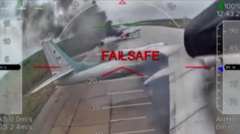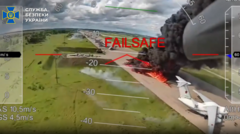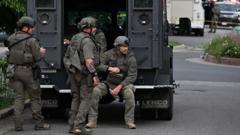Ukraine's recent drone assaults have showcased the unpreparedness of NATO against emerging drone warfare, with experts urging the alliance to bolster defense measures amid evolving military tactics.
NATO Rethinks Defense Strategies as Drone Warfare Evolves

NATO Rethinks Defense Strategies as Drone Warfare Evolves
Recent drone attacks by Ukraine and Russia signal a shift in modern warfare, prompting NATO to reassess vulnerabilities and adapt strategies.
The dramatic escalation of drone warfare in Ukraine and Russia has not only marked a pivotal shift in conflict strategies but has also revealed significant gaps in preparedness among Western nations. Just last Sunday, Ukraine utilized a fleet of drones to target military air bases across Russia, successfully damaging or destroying as many as 20 aircraft stationed hundreds of miles away. This operation has prompted NATO officials to urgently evaluate their own defense capabilities, should adversaries with drone technology manage to undermine large military powers such as Russia, China, or even the U.S.
Drone warfare expert James Patton Rogers from Cornell University remarked, “This is more than an isolated incident — it’s a glimpse into the character of future conflict, where war won’t be confined to neatly drawn front lines.” The challenge for NATO is significant as defense manufacturers in Europe and the U.S. have struggled to keep pace with drone production, especially after witnessing the scale and rapid deployment of long-range drones by Russia against various targets in Ukraine.
In light of these developments, NATO has initiated a joint training center in Poland to collaborate with Ukrainian forces, tapping into their extensive combat experience and insights gained from months of enduring a brutal invasion. Despite facing its own territorial struggles, Ukraine’s military stands as the largest and most tested in Europe, a crucial resource for NATO's future planning against potential aerial threats.























